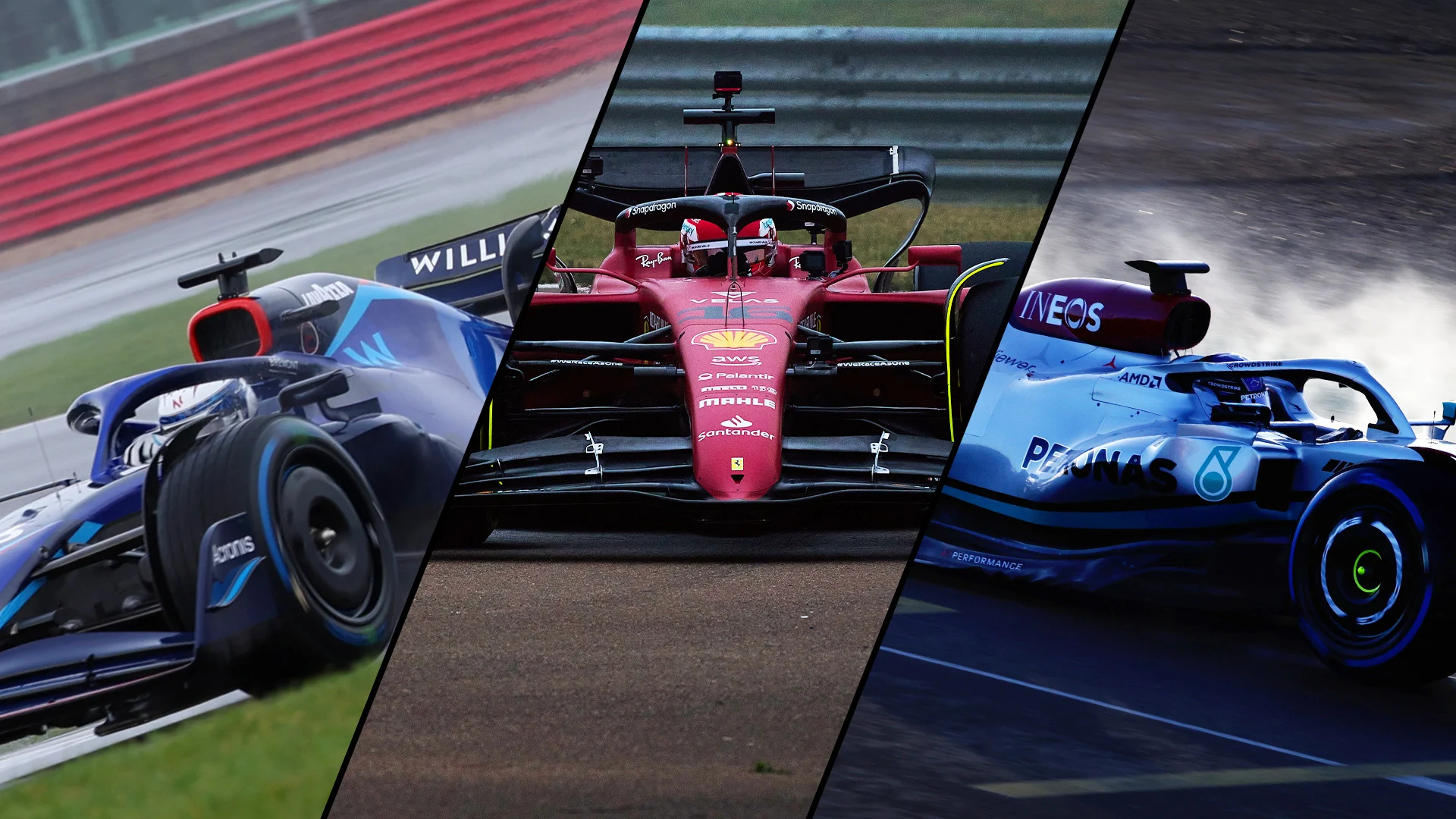Why do some teams have 'gills' on their sidepods, why have some teams chosen pullrod over pushrod suspension, and why do the 2022 F1 cars look so different? Mark Hughes investigates after AlphaTauri, Williams, Ferrari and Mercedes unveiled their cars over the second week of 2022 Formula 1 car launches – with technical imagery from Giorgio Piola.
As more of the 2022 cars have broken cover in the last week – either in official launches or, in the case of Red Bull and Alfa Romeo, out on the track for shakedown runs – so a clearer picture is emerging of what are the technical trends and where the points of differences lie.
The most visually striking point of divergence is probably that of the method of bodywork cooling used. Both Aston Martin and Ferrari have committed heavily to gill cooling on the upper surface of their sidepods – something allowed for the first time since it was banned in 2009 – while others have directed it through tunnels to exit from big outlets at the back of the car.
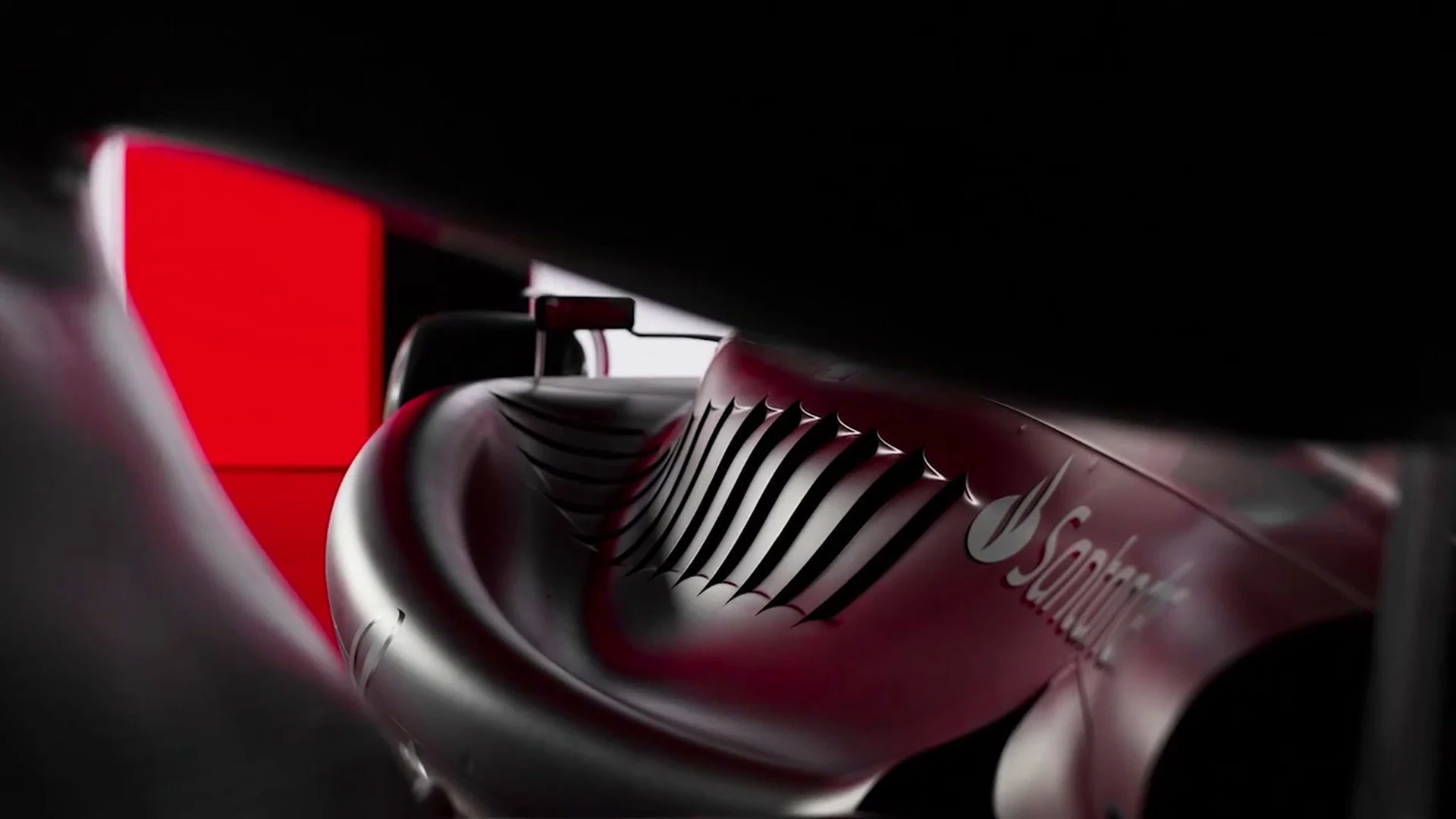
But at least one of the cars with full rear exits has a bodywork blanking panel atop the sidepods, suggesting that a gilled section will be fitted there in the hotter races.
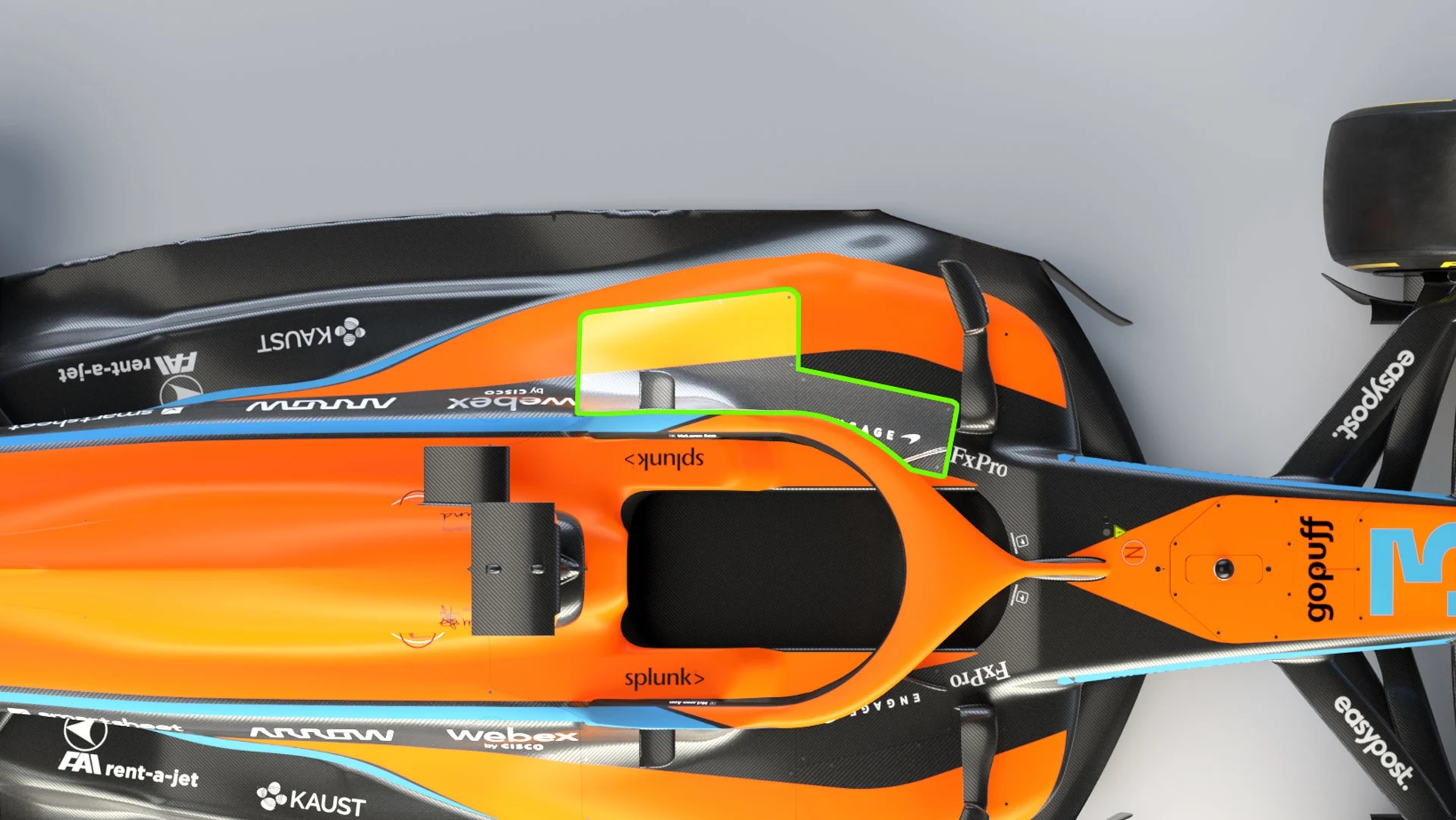
The hot air, which has just been through the radiators, is aerodynamically not useful. Its energy has been spent and the contrast in temperature with the ambient air creates a very disruptive flow. This is why neither the Ferrari nor Aston Martin feature the heavy downward ramp of some other cars where the downward inclination is used to accelerate the airflow to the space between the rear wheels and the diffuser exits of the venturi tunnels. Instead, they have heavily undercut sidepods to do that job, leaving the top surface to vent the hot air in a relatively harmless area.
In the cars with conventional cooling exits at the rear – usually around either side of the exhaust tailpipe – the air is being directed around the beam wing.
READ MORE: Ferrari drivers Sainz and Leclerc shake down new F1-75 car at Fiorano
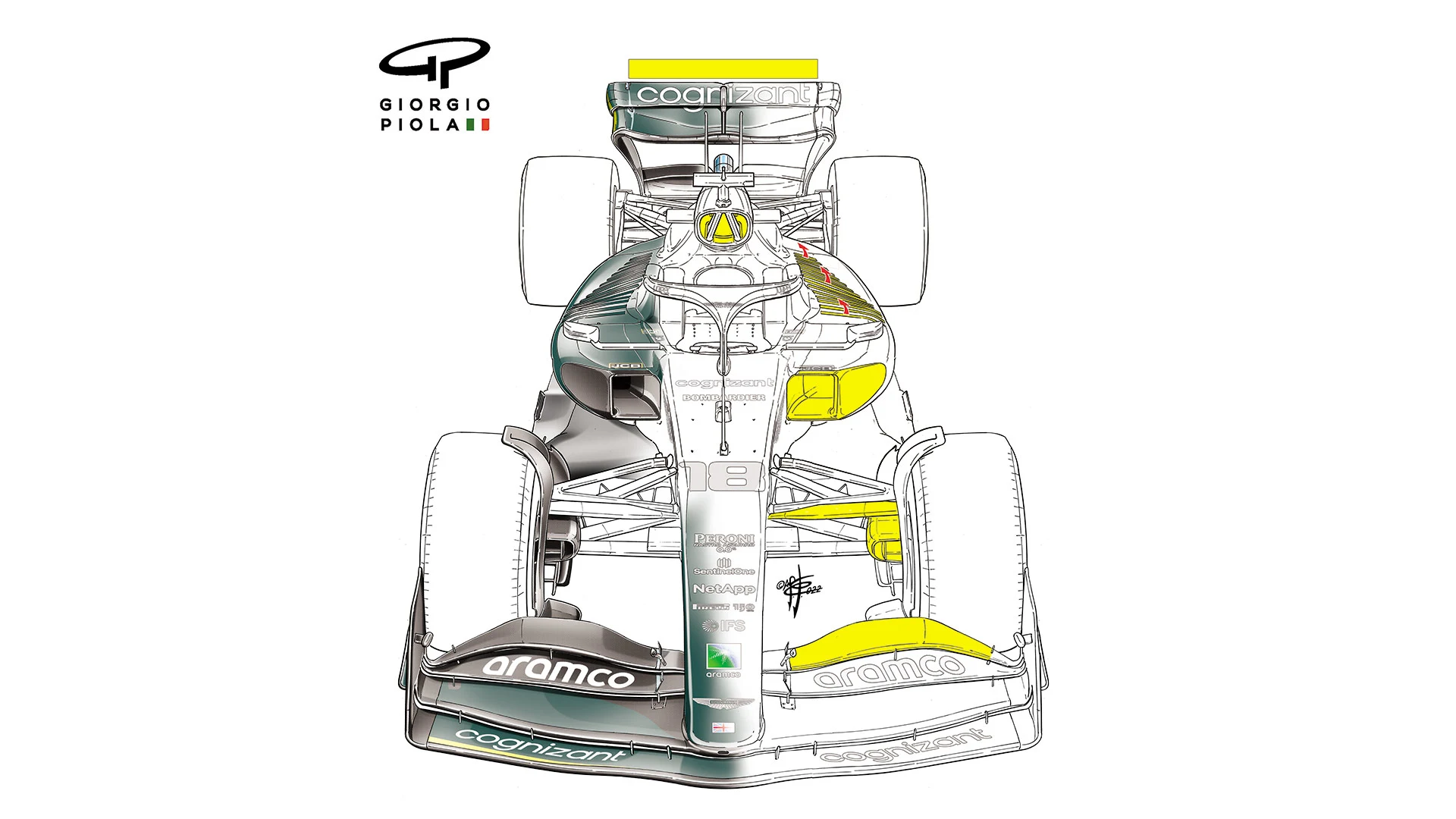
Another key point of divergence is that of front suspension packaging. While most teams have retained the long-established convention of pushrod-actuated rockers whereby a rod from the bottom of the wheelhub is angled upwards to inboard rockers mounted higher, both McLaren and Red Bull have switched to pullrod operation, where the rod runs from the top of the wheelhub to low-mounted rockers inboard.
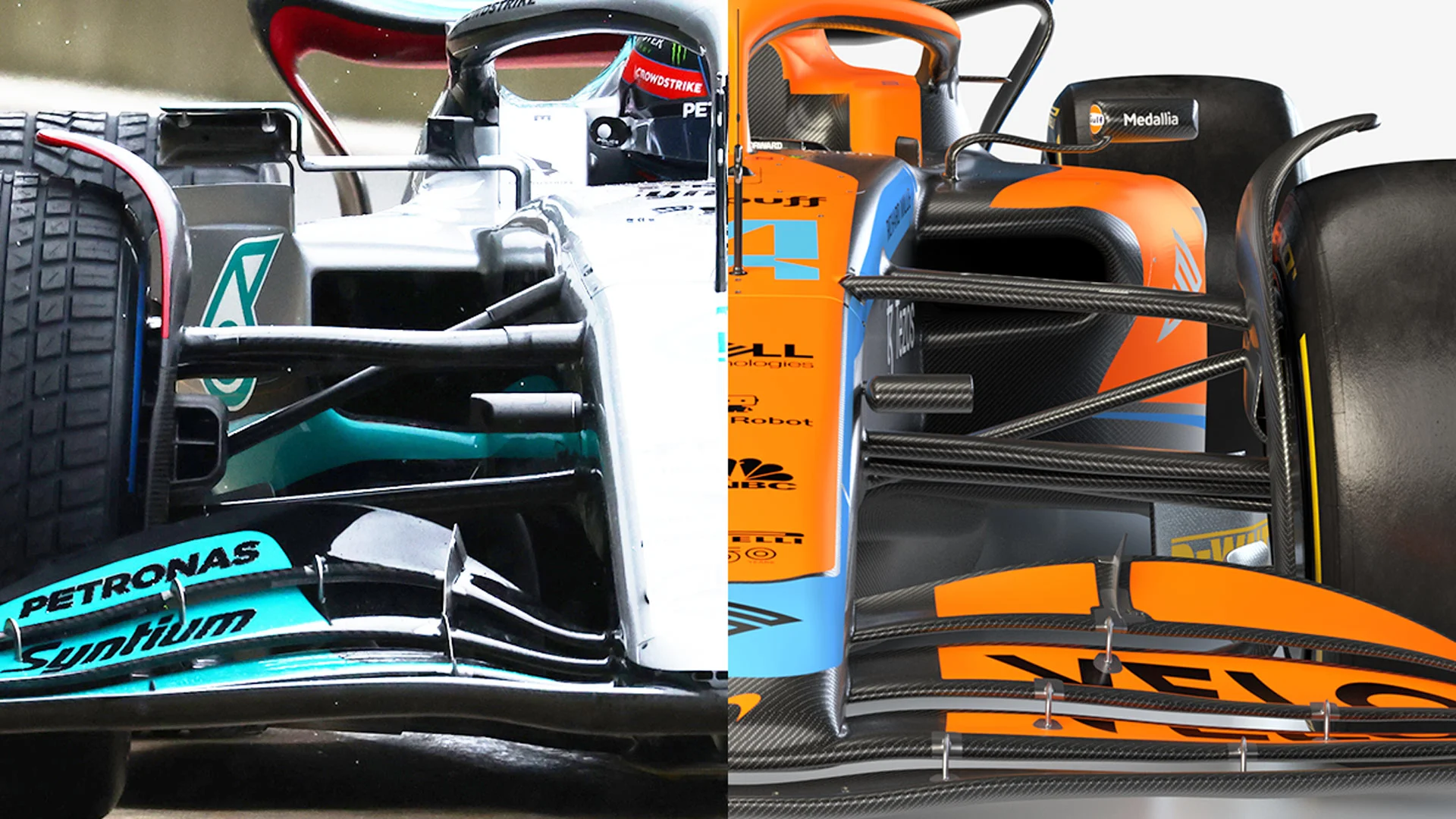
This choice is all about how the teams have aligned their inlets for the venturi tunnels and the shape of their sidepods. They are all trying to maximise the flow to those tunnel inlets and around the side of the pods. Different bodywork shapes and layouts will determine whether the pullrod or pushrod offers a better route for the airflow.
McLaren have gone further still by switching from the common pullrod at the rear to pushrod, a layout to optimise the flow around how they have laid out the exits of their venturi tunnels.
READ MORE: Ricciardo hopes new rules and new McLaren MCL36 mean a return to his overtaking best
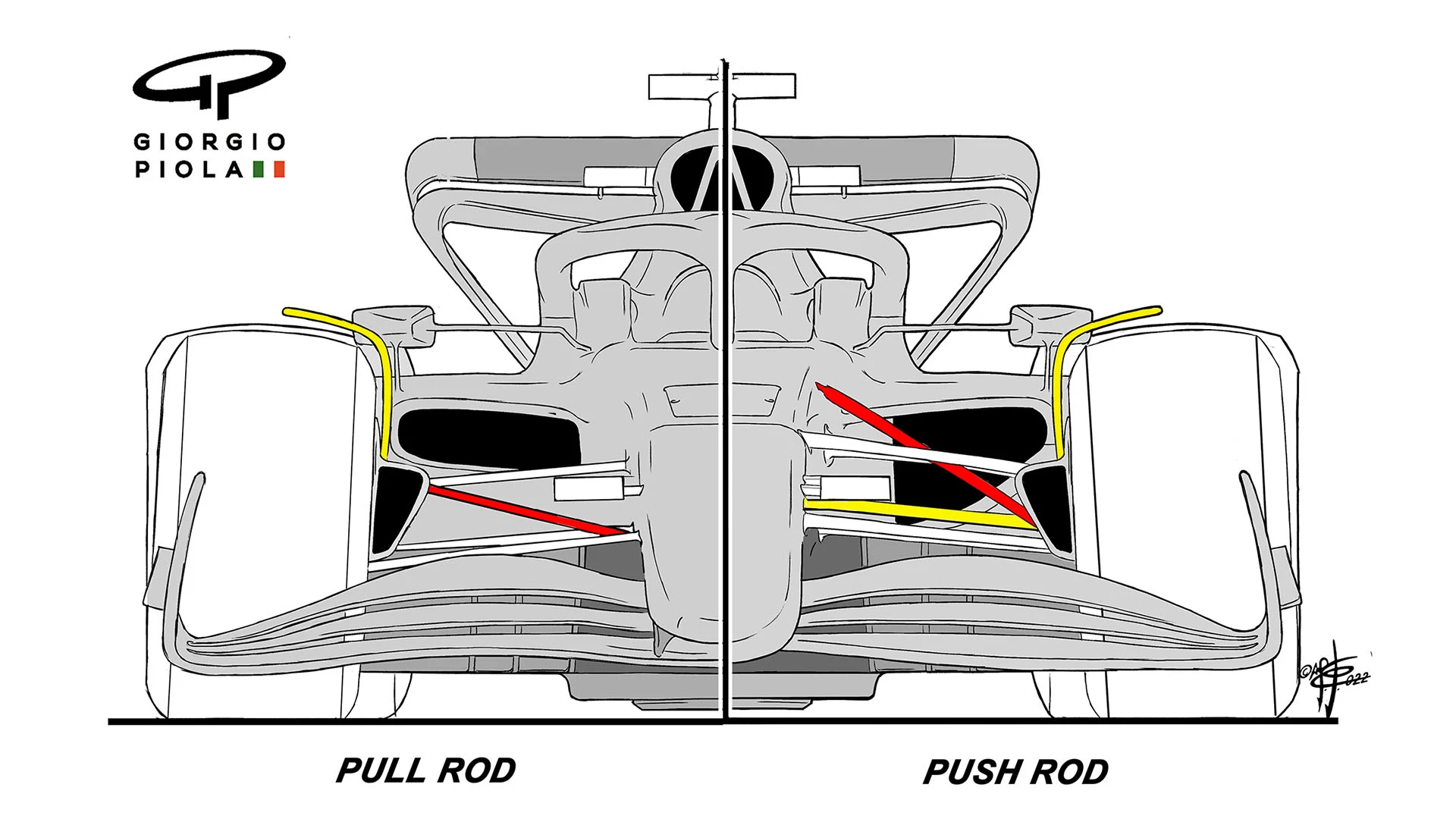
Short/long sidepods
Williams, Haas and Alfa Romeo have all opted for relatively short sidepods. Ferrari, McLaren, Aston Martin, Red Bull and AlphaTauri have all gone long. Mercedes are somewhere in between with sidepods which are notably further back than on other cars, increasing the space between the front axle and the sidepods – which can be very aerodynamically beneficial.
The new regulations have called for a total reconfiguration of cooling layouts because of a) the sidepod area taken up by the new venturi tunnels, and b) the shorter wheelbases which have been regulated in.
The variation in sidepod is a reflection of how they each responded to the cooling re-assessment to give what they consider to be the best aerodynamic solution.
There is also considerable variation in how the extent to which the sidepods are undercut and whether they are angled downward or not.

Individual innovations
Some teams have revealed quite unique innovations not shared by other designs. The most notable of these is probably the Ferrari nosecone, which is split into two parts at the front, with a front upper skin which is part of the front wing structure.
It is the section behind that is crash-tested, and this split solution means that aerodynamic development around the wing and nose tip can be made without having to be re-tested.
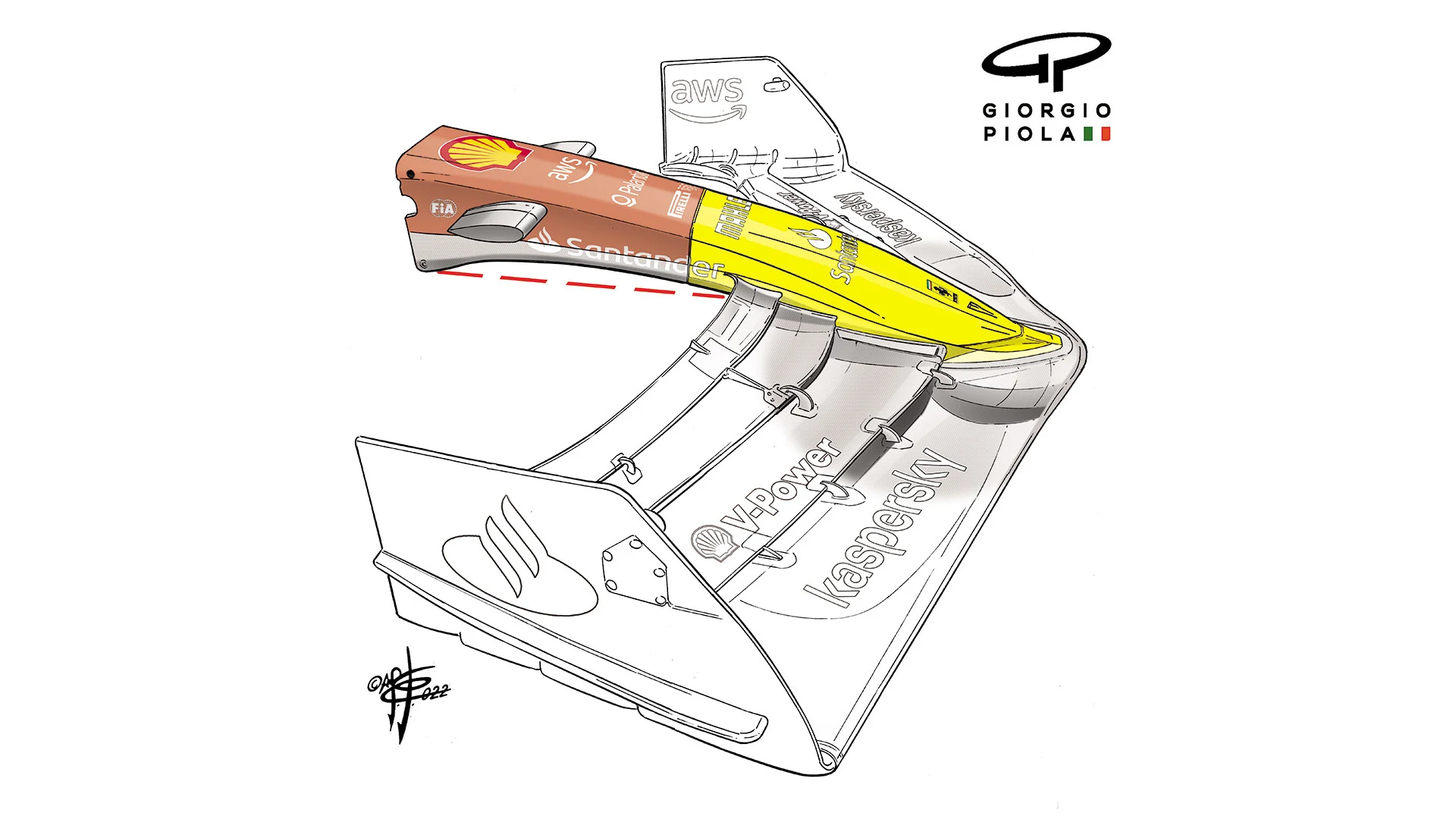
Mercedes have gone extreme with their long and narrow sidepod layout and in doing so created a huge channel of outer floor, maximising the volume of air which can be directed through there and around the diffuser exits to enhance the performance of the venturis.
The designs will evolve and be developed throughout the season and, with pre-season running next up in Barcelona, we'll soon see what every team has decided to bring to take on the new era of F1.
Next Up
Related Articles
.webp) Where are all of Red Bull’s F1 graduates now?
Where are all of Red Bull’s F1 graduates now? Hadjar details what excites him most about racing for Red Bull
Hadjar details what excites him most about racing for Red Bull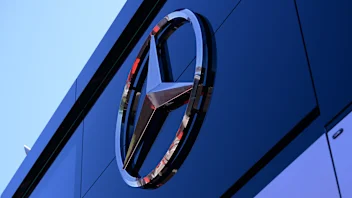 Mercedes confirm date for first look at 2026 F1 car
Mercedes confirm date for first look at 2026 F1 car.webp) 7 things to be excited for in the 2026 F1 season
7 things to be excited for in the 2026 F1 season BarrettoLawrence Barretto’s 5 bold predictions for 2026
BarrettoLawrence Barretto’s 5 bold predictions for 2026.webp) ExclusiveZhou on why he has ‘high trust’ in Cadillac project
ExclusiveZhou on why he has ‘high trust’ in Cadillac project

